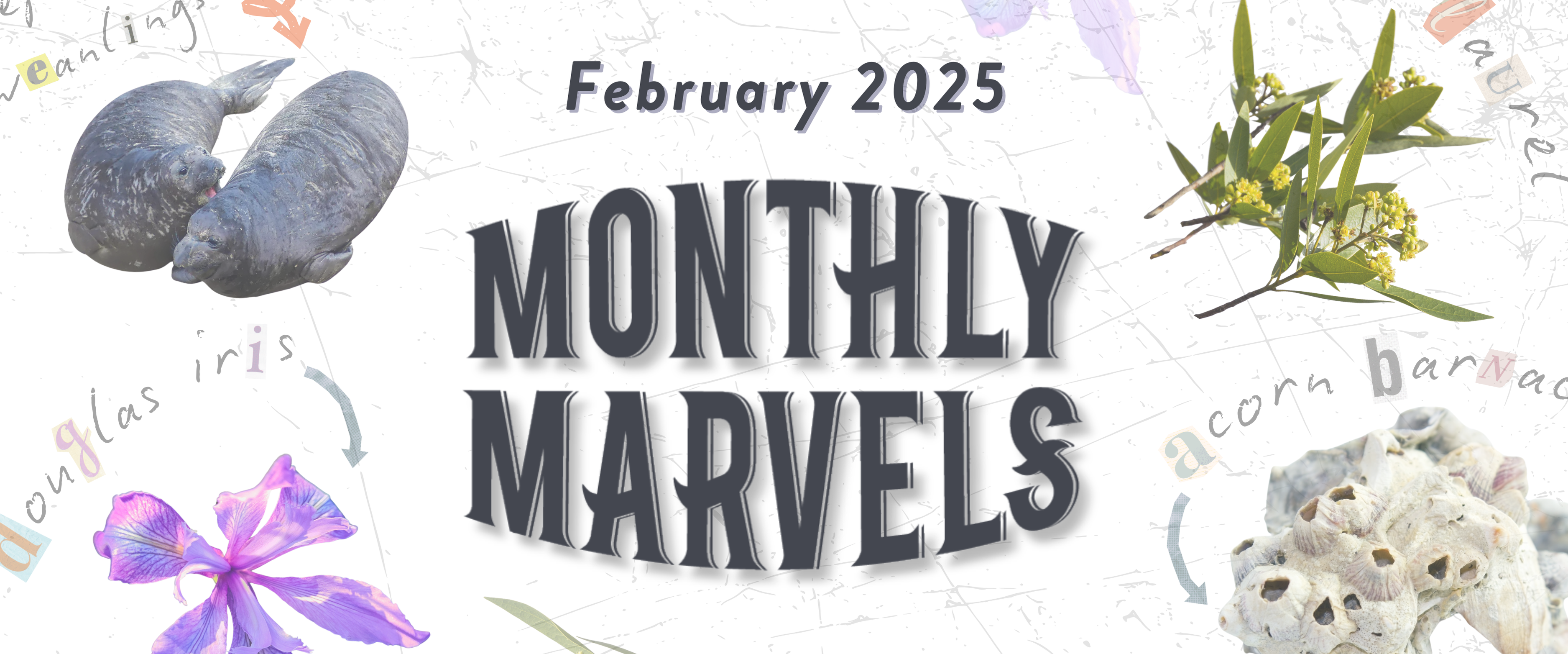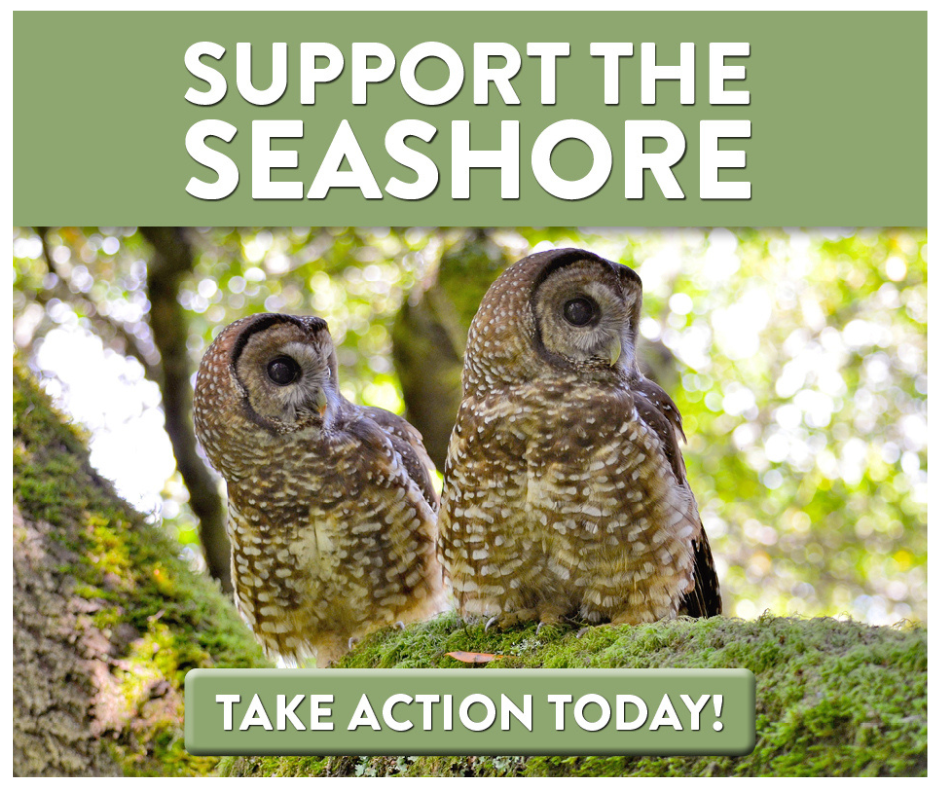This month, Point Reyes’ inhabitants are busy—marine critters are on the hunt for intertidal real estate, young elephant seals are forming support groups for survival, and the tree of umbrellas is blooming. Welcome to February in Point Reyes!
Throughout February:
Tidepool Real Estate
By February, Point Reyes rocky intertidal zones have been worn and battered by the winter’s rough storms. Algae, mussels, and other tide pool organisms are scraped away from their rocky homes by logs, debris, and storm waves. Large swells also remove massive amounts of sand, revealing bare rock faces beneath. These uninhabited patches of rock are valuable real estate—appealing to intertidal customers such as algae, limpets, barnacles, and other animals searching the market to expand their range. Acorn barnacles are some of the most eager buyers, their larvae settling down in rocky intertidal areas in February before other house hunters take up surrounding spots.
Visit the tidepools at Duxbury Reef and explore the winter intertidal organisms. Be sure to check the tide tables and tread lightly!
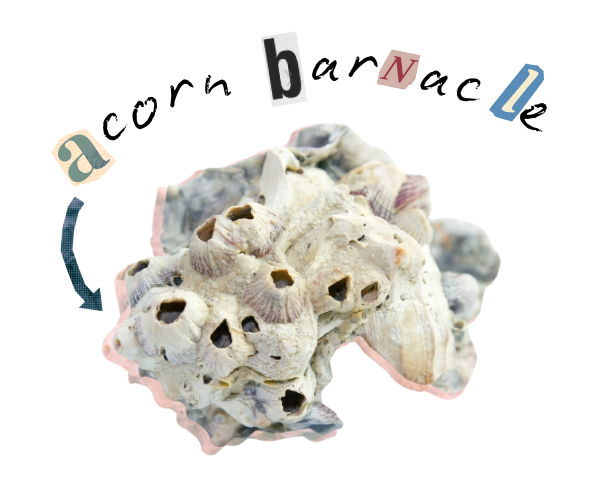

Throughout February:
Centuries of Purple
Spring is abloom….in shades of purple! The Douglas iris is among the earliest flower to bloom in Point Reyes, the first blossoms typically emerging in late February. As you hike past these purple beauties, consider this: Douglas iris clumps are often clones, regrown from previous generations for hundreds of years. In the yearly premiere of their long-running stage play, the iris clumps unfurl their genetically-identical petals year after year for centuries.
Spot Douglas irises growing in the open grasslands along Marshall Beach Trail or Tomales Point Trail.
Throughout February:
The Elephant Seal Support Group
After fasting for an entire month and nursing their young into 300 pound sausages, Point Reyes elephant seal mothers have simply had enough….and are absolutely ravenous. Exhausted, they galumph into the cool ocean water, embarking on a 2.5 month foraging trip—and leaving their young weanlings to fend for themselves and live off of their fat stores. The weanlings form support groups known as “pods,” where they stick together for protection. Together, they learn important life skills; the young seals flop into shallow pools to practice holding their breath underwater, play to build their fighting skills, and scream to practice interpreting each other’s vocalizations.
This February, catch a glimpse of a weanling pod at Drakes Beach or Elephant Seal Overlook.
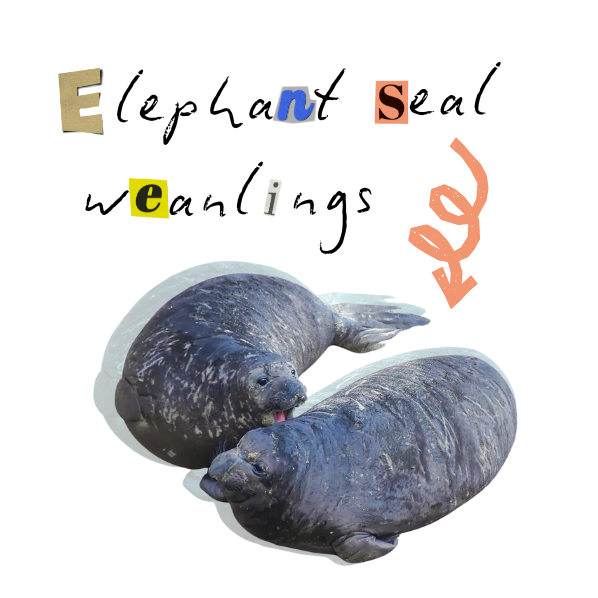
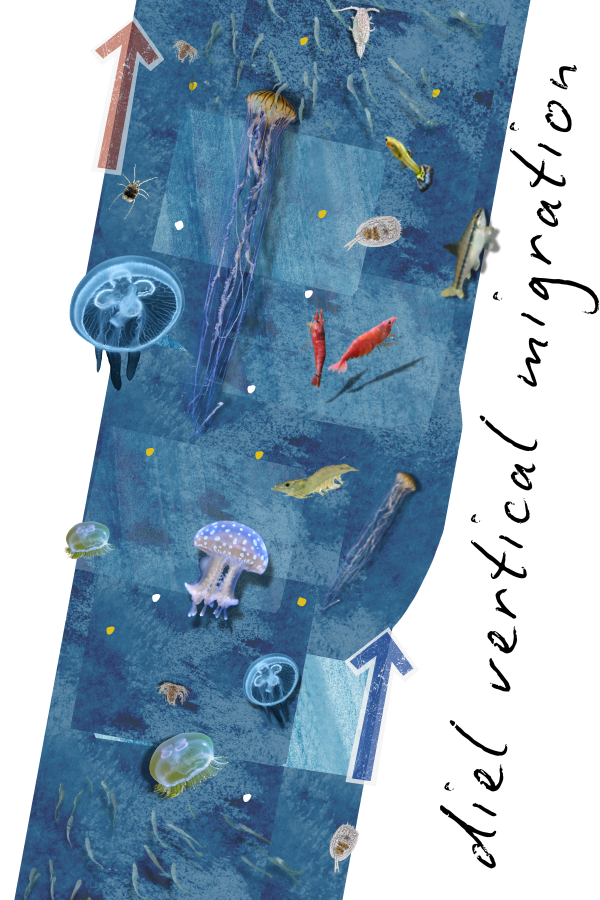
Throughout February:
The Largest Migration on Earth
The largest migration on Earth occurs in February….and every single day of the year. In waters off the coast of Point Reyes (and around the world), billions of marine creatures such as shrimp, fish, jellyfish, and zooplankton synchronously migrate from the depths of the ocean to the water’s surface at night—and then back down again during the day. This movement—so large that it causes turbulence in the water—is called the diel vertical migration. These organisms may undertake this massive daily journey for various reasons, such as feasting on food-rich surface waters under the cover of night, to stay hidden from predators, and even to avoid ultraviolet damage to their DNA.
Look out at the vast ocean anywhere along the Point Reyes coastline—billions of sea creatures are migrating up and down in the ocean every day.
Throughout February:
The Tree of Umbrellas
In Point Reyes’ rainy February forests, one tree is producing thousands of tiny umbrellas—the California bay laurel, or Umbellularia californica. At the tip of each branch, clusters of white-yellow flowers burst open, like a crowd unfurling their umbrellas when a rainstorm is afoot. These early-blooming flowers house orange nectaries at their base, providing a pollen and nectar source when other native plants are still in their vegetative phase.
Find these bay laurels’ yellow flowers brightening up rainy February days on Earthquake Trail, Kule Loklo Trail, and on many other hiking routes around the park.

Photo Credits: Elephant seals – Aiko Goldston / PRNSA -NMFS Permit No. 27424; Douglas iris – Avani Fachon / PRNSA; Acorn barnacle, bay laurel, and marine creatures – Getty Images

